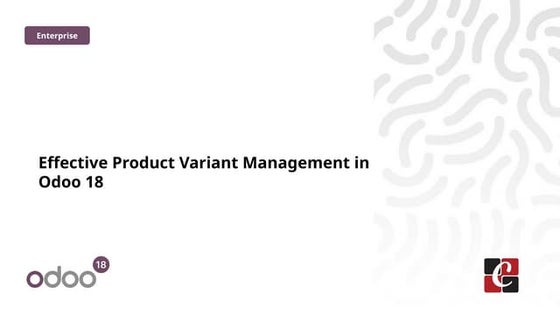common carp culture college of fisheries GBPUAT pantnagar .pptx
- 1. COLLEGE OF FISHERIES G.B. PANT UNIVERSITY OF AGRICULTURE AND TECHNOLOGY, PANTNAGAR, U.S NAGAR, UTTARAKHAND • Presentation Topic- Common Carp (Cyprinus carpio) • Submitted to-: Dr. Avdhesh Kumar (Dean,HOD Dept. of Aquaculture) • Submitted by-: Aditya Tomar (56417) Karan Arya(56442)
- 2. • Scientific classification • Domain: Eukaryota • Kingdom: Animalia • Phylum: Chordata • Class: Actinopterygii • Order: Cypriniformes • Family: Cyprinidae • Subfamily:Cyprininae • Genus: Cyprinus (Cyprinus carpio)
- 3. INTRODUCTION • The Eurasian carp or European carp (Cyprinus carpio), widely known as the common carp, is a widespread freshwater fish of eutrophic waters in lakes and large rivers in Europe and Asia. • Fast growing and good source of food. • The fish can tolerate a wide range of water conditions, from low oxygen to cold temperatures. They even have a special trick for surviving harsh winters – they can burrow into the mud. • Common carp are omnivores. • Their bottom-feeding habits can stir up sediment and harm native plants.
- 4. IDENTIFICATION • There are two barbels on each side of the mouth. No other species that closely resembles the carp has these barbels. • The carp's body is robust, deep and thick, and arched to ward the dorsal fin. • Carp have a lengthy dorsal fin, with nearly 20 soft rays. The dorsal fin extends well along the back, and the fin edge is high in the front and straight in back. • The tail fin is forked and is often a "reddish" color. • The first dorsal and anal fins spines are serrated.
- 5. • The typical carp's back is olive-brown to reddish brown, with the sides becoming silvery-bronze, brassy, or olive-gold. • The belly is yellow or yellow-white. • Most carp are bronze-gold to golden yellow on the sides and yellowish white on the belly. • Most carp are heavily scaled, but two genetic mutants show either few, extremely large scales
- 6. HISTORY • The common carp is native to Europe and Asia and has been introduced to every part of the world except the poles. • They are the third most frequently introduced (fish) species world wide and their history as a farmed fish dates back to Roman times. • Carp are used as food in many areas but are also regarded as a pest in several regions due to their ability to out-compete native fish stocks. • The original common carp was found in the inland delta of the Danube River about 2000 years ago and was torpedo-shaped and golden-yellow in colour. It had two pairs of barbels and a mesh-like scale pattern.
- 7. • Although this fish was initially kept as an exploited captive, it was later maintained in large, specially built ponds by the Romans in south-central Europe (verified by the discovery of common carp remains in excavated settlements in the Danube delta area). • As aquaculture became a profitable branch of agriculture, efforts were made to farm the animals, and the culture systems soon included spawning and growing ponds. • The common carp's native range also extends to the Black Sea, Caspian Sea, and Aral Sea.
- 8. • Both European and Asian subspecies have been domesticated. • In Europe, domestication of carp as food fish was spread by monks between the 13th and 16th centuries. The wild forms of carp had already reached the delta of the Rhine in the 12th century, probably with some human help. • Variants that have arisen with domestication include the mirror carp, with large, mirror-like scales (linear mirror – scaleless except for a row of large scales that run along the lateral line; originating in Germany), the leather carp (virtually unscaled except near dorsal fin), and the fully scaled carp. • Koi carp in Japanese is a domesticated ornamental variety that originated in the Niigata region of Japan in the 1820s, but its parent species are likely the East Asian carp, possibly C. rubrofuscus.
- 9. PHYSIOLOGY AND LIFE HISTORY • The carp has a robust build, with a dark gold sheen most prominent on its head. • Its body is adorned with large conspicuous scales that are very shiny. • It has large pectoral fins and a tapering dorsal fin running down the last two thirds of its body, getting progressively higher as it nears the carp’s head. • Its caudal and anal fins may either be a dark bronze or washed with a rubbery orange hue. • The mouth of the carp is downwards-turned, with two pairs of barbels, the ones on the bottom being larger. • Wild common carp are typically slimmer than domesticated forms, with body length about four times body height, red flesh, and a forward-protruding mouth.
- 10. • Common carp can grow to very large sizes if given adequate space and nutrients. • Their average growth rate by weight is about half the growth rate of domesticated carp. • They do not reach the lengths and weights of domesticated carp, which (range, 3.2–4.8 times) can grow to a maximum length of 120 centimeters (47 in), a maximum weight of over 40 kilograms (88 lb.). • The longest-lived common carp documented was of wild-origin (in non-native habitat of North America), and was 64 years of age. • The largest recorded carp, caught by British angler, Colin Smith, in 2013 at Etang La Saussaie Fishery, France, weighed 45.59 kilograms (100.5 lb.). • The average size of the common carp is around 40–80 cm (16–31 inches) and 2–14 kg (4.4– 30.9 lb.).
- 11. HABITAT • Although tolerant of most conditions, common carp prefer large bodies of slow or standing water and soft, vegetative sediments. As schooling fish, they prefer to be in groups of five or more. • They naturally live in temperate climates in fresh or slightly brackish water with a pH of 6.5–9.0 and salinity up to about 0.5ppt and temperatures of 3 to 35 °C (37–95 °F). • The ideal temperature is 23 to 30 °C (73–86 °F), with spawning beginning at 17 to 18 °C (63–64 °F). • They easily survive winter in a frozen-over pond, as long as some free water remains below the ice. • Carp are able to tolerate water with very low oxygen levels, by gulping air at the surface.
- 12. WATER QUALITY PARAMETERS Parameter Optimal Range Notes Temperature 20-28°C (68-82°F) Common carp can tolerate a wide range of temperatures, but optimal growth occurs within this range. pH 6.5-8.5 Carp are relatively tolerant of pH fluctuations, but the optimal range supports better health and growth. Dissolved Oxygen >5 mg/L Carp can survive at lower oxygen levels, but higher concentrations support better metabolism and activity. Ammonia (NH3) <0.05 mg/L Toxic to fish at higher concentrations; regular monitoring and water changes help maintain low levels. Nitrite (NO2-) <0.1 mg/L Elevated nitrite levels can be harmful; biological filtration helps convert nitrite to less harmful nitrate. Nitrate (NO3-) <50 mg/L Less toxic than ammonia and nitrite, but high levels can stress fish and promote excessive algae growth. Hardness 50-300 mg/L as CaCO3 Reflects the concentration of calcium and magnesium; important for osmoregulation and overall health. Alkalinity 75-200 mg/L as CaCO3 Helps buffer pH fluctuations; stable alkalinity levels are crucial for maintaining a stable pH. High turbidity can affect feeding and
- 13. DIET • Common carp are omnivorous. • They can eat a herbivorous diet of aquatic plants, plant tubers, and seeds, but prefer to scavenge the bottom for insects, crustaceans (including zooplankton and crawfish), molluscs, benthic worms, fish eggs, and fish remains. • Common carp feed throughout the day with the most intensive feeding at night and around sunrise.
- 14. REPRODUCTION • Common carp can produce a large number of eggs. Estimates suggest that a single female can lay between 100,000 to 1,500,000 eggs per kilogram of body weight. This means a large female can potentially produce several million eggs during a spawning season. • Common carp is a seasonal breeder, typically spawning in spring and early summer when water temperatures range between 18-26°C. • They exhibit external fertilization where eggs and sperm are released into the water column. • In commercial operations, spawning is often stimulated using a process called hypophysation, where lyophilized pituitary extract is injected into the fish. • The pituitary extract contains gonadotropic hormones which stimulate gonad maturation and sex steroid production, ultimately promoting reproduction. • The good eggs are shiny and translucent and the bad ones are white. Hatching takes 40-72 hours. If the weather is cool the spawn takes a longer time to hatch.
- 15. SPAWNING TECHNIQUES • Natural Spawning: • Preparation: Broodstock are placed in specially prepared spawning ponds or enclosures with aquatic vegetation or synthetic substrates for egg attachment. • Spawning Process: As water temperature rises, males chase females, leading to the release of eggs and sperm. Fertilized eggs adhere to the substrates. • Post-Spawning Care: After spawning, adults are removed to prevent predation on eggs.
- 16. • Artificial Spawning: • Hormonal Induction: Broodstock are injected with hormones to induce ovulation and spermiation. • Egg and Sperm Collection: Eggs are manually stripped from females and mixed with sperm collected from males. • Fertilization: The mixture is stirred gently with a feather or soft brush to ensure thorough fertilization, often using a small amount of water. • Incubation: Fertilized eggs are placed in hatching troughs or jars with gentle water flow to maintain oxygenation and cleanliness
- 17. INTEGRATED FARMING SYSTEMS WITH COMMON CARP • Integrated farming systems combine fish culture with other agricultural practices to optimize resource use, improve sustainability, and increase overall productivity. Common carp (Cyprinus carpio) is particularly well-suited for integration due to its hardy nature and adaptability to various environments. Here are several types of integrated farming systems involving common carp: 1. Integrated Fish-Livestock Farming • Fish-Poultry Integration • Fish-Duck Integration • Fish-Cattle/Buffalo Integration 2. Integrated Fish-Crop Farming • Fish-Rice Integration • Fish-Vegetable Integration
- 18. 3. Integrated Fish-Horticulture Farming • Aquaponics 4. Integrated Fish-Forest Farming • Agroforestry and Fish Farming
- 19. BENEFITS OF INTEGRATED FARMING SYSTEMS WITH COMMON CARP • Resource Optimization: Efficient use of land, water, and nutrients reduces waste and input costs. • Increased Productivity: Multiple crops (fish, livestock, crops) increase overall farm output and income. • Environmental Sustainability: Integrated systems promote nutrient recycling, reduce the need for chemical inputs, and enhance biodiversity. • Economic Resilience: Diversified income sources reduce financial risks for farmers.
- 20. OVERVIEW OF COMMON CARP CULTURE: Breeding and Hatchery Management 1)Broodstock Selection: Healthy, fast-growing, and disease-resistant broodstock are selected to ensure high-quality offspring. Typically, broodstock are selected based on size, age, and genetic traits. 2)Induced Spawning: Hormonal treatments, such as carp pituitary extract or synthetic hormones, are used to induce spawning. This ensures a controlled and synchronized spawning process. 3)Hatchery Systems: Eggs are incubated in hatchery systems with controlled temperature, oxygen levels, and water quality. Techniques include the use of hapa nets, troughs, and jars for egg incubation. 4)Larval Rearing: Newly hatched larvae are initially fed with natural zooplankton and later weaned onto formulated feeds. Maintaining optimal water quality and preventing
- 21. POND PREPARATION AND STOCKING 1)Pond Types: Common carp are typically cultured in earthen ponds, although they can also be raised in concrete tanks and cages. 2)Pond Preparation: Ponds are prepared by drying, liming, and fertilizing to promote the growth of natural food organisms like plankton. 3)Stocking Density: Fingerlings are stocked at densities ranging from 1,000 to 2,500 per hectare, depending on the desired production system and pond management practices.
- 22. FEEDING AND NUTRITION 1)Natural Diet: Common carp feed on a variety of natural food sources in ponds, including plankton, detritus, and benthic organisms. 2)Supplemental Feeding: In semi-intensive and intensive systems, supplemental feeds such as grains, agricultural by-products, and formulated pelleted feeds are provided. The feed should be nutritionally balanced to ensure optimal growth. 3)Feeding Strategies: Feed is administered based on the fish’s biomass and growth stage, typically 2-3 times daily. Monitoring feed conversion ratios helps in adjusting feeding rates and improving efficiency.
- 23. WATER QUALITY MANAGEMENT 1)Monitoring: Regular monitoring of water parameters such as temperature, dissolved oxygen, pH, ammonia, and nitrite levels is essential to maintain a healthy environment. 2)Aeration: Aeration systems, including paddlewheels and diffused aerators, are used to maintain adequate oxygen levels, especially in high-density systems. 3)Water Exchange: Regular water exchange helps to remove waste products and maintain water quality.
- 24. HEALTH MANAGEMENT 1)Disease Prevention: Regular health checks, quarantine procedures for new stock, and vaccination programs are essential to prevent disease outbreaks. 2)Biosecurity: Implementing biosecurity measures, such as restricting access to the culture area and using disinfectants, helps to prevent the introduction and spread of pathogens. 3)Treatment: In case of disease outbreaks, appropriate treatments including antibiotics, probiotics, and other therapeutics are administered under the guidance of fish health specialists.
- 25. HARVESTING AND MARKETING 1)Harvesting Techniques: Common carp are harvested using nets, seines, or draining the pond. Care is taken to minimize stress and injury to the fish. 2)Processing: Post-harvest, fish are sorted, graded, and can be sold live, fresh, or processed into various products. Value-added products include smoked, dried, and filleted carp. 3)Marketing Channels: Carp are marketed through various channels, including local markets, wholesalers, and retail outlets. Effective marketing strategies ensure good returns for farmers.
























































































